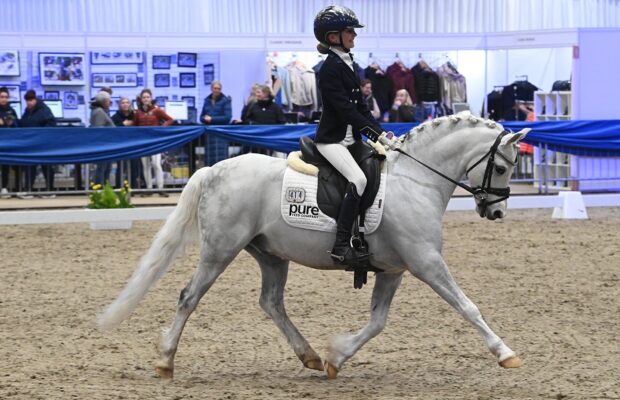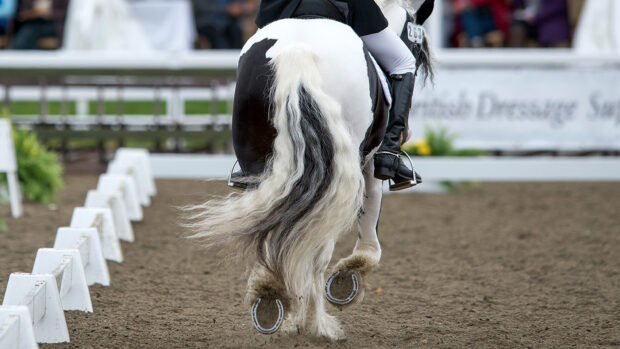Alice trains and competes home-bred and clients’ horses at her family’s Headmore Stud in Hampshire. She was a member of the 2009 young rider European dressage team, has won national titles and trained her first three horses to grand prix level. Alice has won at international big tour and been on several Nations Cup teams.
Training the stars
My former grand prix ride, Wurlizer, initially struggled with the piaffe. Many thought he would just be a good small tour horse, but by training the trot and teaching him to step smaller, we were able to achieve the piaffe. He ended up doing international grand prix. Although he would never execute a classically correct piaffe, as he didn’t close up, he was still able to score eights as he’d piaffe happily on the spot for 15 steps. Judges commented that he looked as if he could stay there forever.
The piaffe is the ultimate collected movement to display in a dressage test. Your horse should essentially be looking as if he is trotting on the spot, and he should lower his croup and take the weight on his hindlegs to lighten the forehand. As with every dressage movement, a piaffe is something that horses can do naturally on their own in certain circumstances. While the piaffe is naturally shown through tension, the difficulty lies in achieving the movement with the desired relaxation needed for good marks.
Tackling the issue
1. I like to start training the half-steps under saddle. I ask my horse to jog and then use a whip to lightly tap him “up” on top of the croup in a piaffe rhythm. I’ll also click with the voice aid, so he starts to bounce and take quicker and more active steps behind.
2. Begin in rising trot, but only rise half an inch out of the saddle. Keeping the same rhythm means your horse should feel a difference in the seat and take shorter steps. This also means he’ll respond to the seat aid and take the weight on his hindlegs — if you use the reins, the hindleg slows.
3. As soon as your horse offers a tiny reaction, praise him to let him know he’s doing it right. As he gets the idea more and more, you will be able to build up the number of steps.
4. When training piaffe, avoid keeping your horse on the spot — the piaffe at grand prix is ideally on the spot, but when you’re teaching it, ensure he remains forward to help build his confidence.
Article continues below…
You might also be interested in:

#SundaySchool: perfecting pirouettes with Rebecca Hughes
The international dressage rider and young horse producer explains how walk pirouettes can improve engagement for medium trot

#SundaySchool: How do I maintain impulsion in downward transitions?
Dressage rider Alice Oppenheimer explains how to keep a horse energetic and forward, even when slowing down

Subscribe to Horse & Hound magazine today – and enjoy unlimited website access all year round
Consider this…
- Ensure your horse keeps the activity in the trot and doesn’t just slow the rhythm.
- Make sure he doesn’t just go higher in the step, which is more towards a passage than a piaffe. Keep the activity and rhythm, then build on it to encourage him to take more weight behind.
- You can also train your horse to piaffe in-hand, but I would recommend asking someone with experience to help you if you would like to try this option.
Would you like to read Horse & Hound’s independent journalism without any adverts? Join Horse & Hound Plus today and you can read all articles on HorseandHound.co.uk completely ad-free




